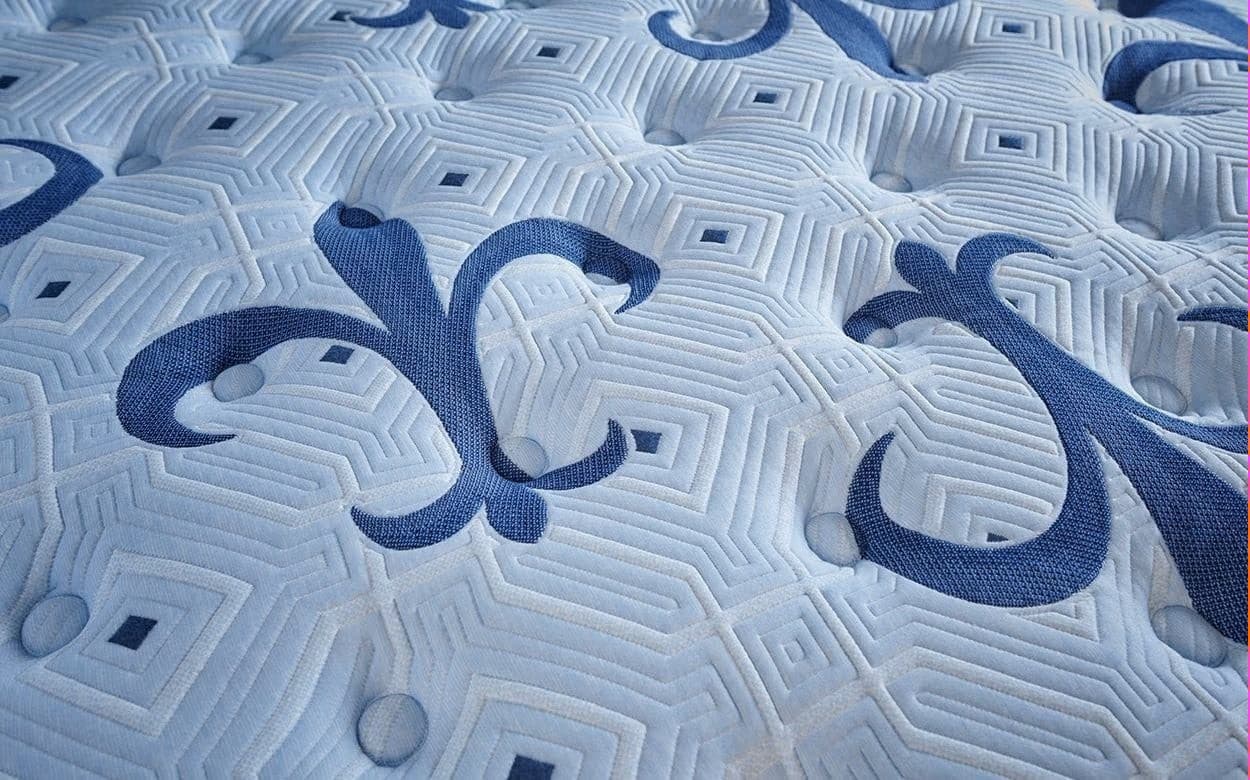Waking up feeling like you've been in a wrestling match with your bed? It might be a sign your mattress is too firm. While a supportive mattress is important for spinal health, excessive firmness can lead to discomfort, poor sleep, and even chronic pain. In this blog, we explore how to identify if your mattress is too firm and what to do about it.
Table of Content
- Introduction
- Key Takeaways
- What Does a Firm Mattress Mean?
- Signs Your Mattress Is Too Firm
- Ideal Firmness by Sleep Position
- How to Soften a Too-Firm Mattress
- When to Replace Your Mattress
- Alternatives to Consider
- Comparison table
- Visual graph: Signs Your Mattress May Be Too Firm
- Conclusion
- Frequently Asked Questions
Key Takeaways
- A too-firm mattress may cause pressure buildup, stiffness, or poor circulation.
- Side sleepers and lighter-weight individuals are more prone to firmness-related discomfort.
- Solutions include mattress toppers, rotation, or replacement with a more suitable firmness level.
- Mattress firmness should align with your sleeping position and body type.
What Does a Firm Mattress Mean?
Firmness refers to how soft or hard a mattress feels when you lie on it. While firmness is subjective, it’s usually rated on a scale from 1 (softest) to 10 (firmest). Mattresses between 7 to 9 are generally considered firm. A firm mattress provides strong support and little sinkage, which can be great for certain sleep styles but a nightmare for others.
Signs Your Mattress Is Too Firm
1. Morning Aches and Pains
If you consistently wake up with sore shoulders, back, or hips, your mattress might be too hard. A firm surface doesn't allow your body to contour properly, which can strain your joints and muscles.
2. Numbness or Tingling Sensations
Excess pressure on certain areas can lead to numb arms or tingling fingers, especially for side sleepers. This is often due to poor blood circulation from pressure points
3. Tossing and Turning
Constantly shifting positions at night? This could be a sign your mattress isn't accommodating your natural curves and comfort needs.
4. Pressure Points on Shoulders and Hips
If you're a side sleeper and feel sore in your hips and shoulders, your mattress may not be soft enough to cushion these key areas.
5. Uneven Spinal Alignment
A firm mattress may push your spine out of its natural alignment, especially for side and stomach sleepers, leading to long-term pain.
6. Lack of Sinkage
Your body should slightly sink into a mattress for proper contouring. If you feel like you're lying "on top" rather than "in" the bed, it might be too firm.
7. Better Sleep on Softer Surfaces
If you find yourself sleeping better on a couch, hotel bed, or a friend's mattress, it’s time to reevaluate your current mattress firmness.
Ideal Firmness by Sleep Position
Back Sleepers
Back sleepers often prefer medium-firm to firm mattresses (6.5 to 8) for spinal alignment and lumbar support.
Side Sleepers
Side sleepers typically need softer to medium firmness (4 to 6) to accommodate pressure points and maintain spinal alignment.
Stomach Sleepers
Stomach sleepers may benefit from medium-firm mattresses (6 to 7.5) to prevent their midsection from sinking too deeply.
How to Soften a Too-Firm Mattress
Use a Plush Mattress Topper
Adding a memory foam or pillow-top mattress topper can provide instant softness and pressure relief.
Warm It Up
Some foams soften slightly with heat. Try warming your room or using an electric blanket briefly before bed.
Break It In
Give your mattress time to soften with use. Walking gently across the surface can help break it in.
Rotate the Mattress
Turning your mattress 180 degrees can redistribute wear and reduce pressure points.
When to Replace Your Mattress
If you've tried all the above tricks and still wake up sore or tired, it might be time to replace your mattress. Most mattresses last between 7–10 years. If yours is older, sags, or no longer meets your comfort needs, consider a replacement.
Alternatives to Consider
· Memory Foam Mattresses: Great for pressure relief and contouring.
· Hybrid Mattresses: Combine the support of coils with the softness of foam or latex.
· Latex Mattresses: Offer responsive cushioning and natural cooling.
· Adjustable Firmness Mattresses: Let you customize your side of the bed.
Comparison Table
|
Factor |
Too Firm Mattress |
Ideal Mattress |
Too Soft Mattress |
|
Pressure Relief |
Poor – causes discomfort in shoulders, hips |
Balanced – contours without sinking too much |
Excessive – may lack support and cause misalignment |
|
Spinal Alignment |
Can force spine into unnatural curves |
Maintains neutral spine alignment |
May allow hips/shoulders to sink too far |
|
Motion Isolation |
Typically low unless foam layers are added |
Good – especially in hybrids or memory foam |
Good – foam absorbs movement well |
|
Ease of Movement |
Good – solid surface makes turning easier |
Balanced movement and comfort |
Poor – feels like being “stuck” in mattress |
|
Back Sleepers |
May feel comfortable but can still cause stiffness |
Ideal firmness for proper lumbar support |
May cause arching of the spine |
|
Side Sleepers |
Too much pressure on joints |
Provides cushioning and spinal alignment |
May feel too “squishy” and unsupported |
|
Stomach Sleepers |
Preferred firmness for proper support |
Acceptable with firmer comfort layers |
Often too soft – leads to lower back strain |
|
Common Complaints |
Numb limbs, joint pain, tossing and turning |
Fewer complaints, better sleep quality |
Lower back pain, lack of support, poor posture |
|
Best For |
Heavier individuals, stomach sleepers |
Average weight individuals with neutral preferences |
Lightweight individuals, side sleepers |
Visual graph: Signs Your Mattress May Be Too Firm

This visual graph highlights the top signs that your mattress may be too firm. Symptoms like morning back pain, hip pressure, and numbness are among the most intense indicators. Recognizing these signs can help improve your sleep comfort and guide your next mattress decision.
Conclusion
Your mattress should support restful, pain-free sleep not be the reason you dread waking up. If you experience persistent stiffness, soreness, or feel like your bed is fighting you, it might be too firm for your needs. Use the signs and solutions outlined above to assess whether it's time to make a change.
Frequently Asked Questions
1. Can a firm mattress cause back pain?
Yes, if it doesn't align with your sleep position or body weight. Overly firm mattresses can push the spine out of alignment.
2. How long does it take to adjust to a new firm mattress?
It usually takes 2–4 weeks to adjust. If pain persists beyond that, the firmness may not be right for you.
3. What type of sleeper should avoid firm mattresses?
Side sleepers and lighter individuals often do better with medium or plush mattresses.
4. Can a topper really fix a mattress that's too firm?
Yes, a quality topper can significantly soften the surface and improve comfort.
5. Will breaking in a mattress make it less firm?
Yes, regular use can gradually soften the materials, especially memory foam.
6. Are firmer mattresses better for heavier people?
Generally, yes. Firmer mattresses provide more support and prevent excessive sinkage.
7. How do I test if my mattress is too firm?
Try lying on your side for 10 minutes. If you feel pressure on your hips or shoulders, it might be too firm.
8. Can sleeping hot be a sign of a firm mattress?
Not directly, but firm foam without cooling tech can retain heat. A softer, breathable top layer may help.
9. Is a firm mattress good for posture?
Only if it allows your spine to remain neutral. Otherwise, it could harm your posture.
10. Should I return a firm mattress if I wake up in pain?
If you're within the trial period and experiencing discomfort, it may be worth exchanging for a softer option.


